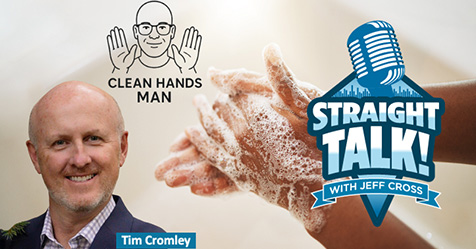The buzz in healthcare facilities focuses on cutting-edge treatments and breakthroughs. However, manual wheelchairs and similar mobility equipment continue to play an integral role in patient care. While an April 2023 study published by the U.S. National Library of Medicine found that a vast majority of patients experienced skin problems related to their use of a wheelchair, there are many other essential mobility tools—like stretchers and lifts—that also require proper disinfection. As confirmed by a review in The Journal of Hospital Infection, cleanliness of these tools is crucial for the overall well-being of those who rely on them, especially since this equipment is often shared between patients and can readily transmit pathogens to multiple individuals.
When investing in disinfection products to maintain a safe environment, have you considered their potential impact on the longevity of the vital mobile equipment that operates in the background?
Understanding compatibility
Before selecting a compatible disinfectant optimal for your facility’s mobility equipment, let’s establish a foundational understanding of compatibility.
Significance of compatibility: The compatibility between disinfectants and mobility equipment in your facility is vital in preventing a cascade of negative consequences. These consequences range from voiding warranties, damaging equipment, compromising patient safety, and increasing regulatory compliance issues, including potential fines or loss of accreditation. Organizations, such as nonprofit health organization The Joint Commission, are focused on the patient care experience; therefore, equipment that patients frequently use will be at the forefront of their surveyors’ audits. The guidelines discussed further below are resources to help facilities stay compliant by helping to ensure the compatibility of disinfectants with their equipment.
Disinfection guidelines and manufacturer testing: Some medical equipment has disinfection guidelines provided by the manufacturer and based on tests of readily available disinfectants on the equipment’s exterior surfaces. These guidelines are often available in the user manual or instructions for use (IFU). The Joint Commission states, “It is important to understand that each patient care item has its own IFU for cleaning and disinfection, and the expectation is that the organization will follow those instructions.” Unfortunately, it is difficult for medical device manufacturers to test numerous disinfectants due to restraints in time, funding, and resources, as well as the numerous materials present in each piece of equipment. This can consequently lead to limitations in identifying compatible disinfectants.
Collaboration for comprehensive disinfection guidelines: Mobility equipment manufacturers can source exterior surface materials for their products from raw material manufacturers. Some of these manufacturers conduct testing of readily available disinfectants on their materials, and some disinfectant manufacturers conduct testing of their formulations on common surface materials found in healthcare settings. Therefore, to optimize efficiency, it can be advantageous if the disinfectant, raw material, and mobility equipment manufacturers collaborate on their testing efforts. In cases in which disinfection guidelines for a particular piece of mobility equipment do not provide a viable option for healthcare facilities, collaboration between the various manufacturers of mobility equipment , raw materials, and disinfectant products is crucial to identify optimal solutions for a risk mitigation plan, as advised by The Joint Commission.
Tips for selecting a compatible disinfectant
- Research and identify manufacturer guidelines: Identify the manufacturer of your mobile medical equipment and obtain their disinfection guidelines in their most recent IFU or user manual. Manufacturers might approve disinfectants by name, list approved chemical concentration thresholds of specific compounds, or provide guidelines that do not identify any EPA-registered disinfectants approved for use on their equipment.
- Engage with equipment and disinfectant manufacturers: If comprehensive disinfection guidelines are not provided, contact equipment and disinfectant manufacturers to discuss compatibility concerns and to obtain a potential disinfectant recommendation.
- Trial and observe: When introducing a new disinfectant to your equipment, it is important to monitor the areas exposed to disinfectants for any signs of damage, discoloration, or other adverse reactions over a specified period.
It is critical for device manufacturers to find a manufacturer that produces disinfectants that are strong enough to eliminate harmful bacteria, yet gentle enough to preserve the integrity of medical devices. By adhering to disinfection guidelines, understanding material compatibility, and considering the results of manufacturer testing, facilities can ensure optimal equipment performance, prevent costly repercussions, and contribute to a cleaner, more efficient environment. Through diligent research and meticulous implementation, facilities can maintain compatibility and compliance, creating a setting in which patient safety and effective operations remain uncompromised.




